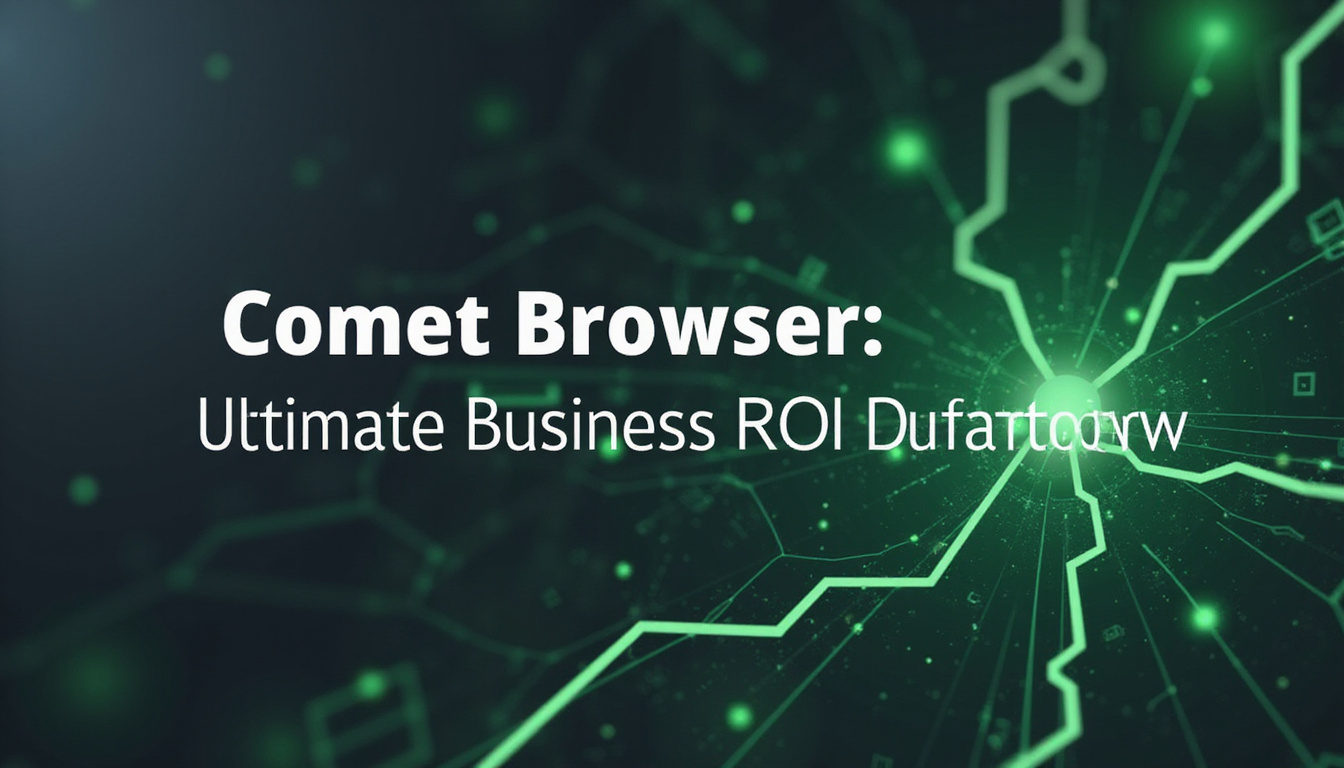Comet Browser (Perplexity) Review & Business Playbook — Features, Limits, Tests, ROI
TL;DR Snapshot (120–160 words)
Perplexity Comet is an AI browser that embeds a persistent Perplexity assistant for source-backed conversational results and cross-tab awareness. For power researchers and analysts it cuts manual synthesis time by giving concise, cited answers and synthesizing content across tabs, but expect higher Comet RAM usage, occasional hallucinations in AI output, and gated Comet availability/pricing for many teams. This Comet review explains how the Chromium-based Comet browser works, what it does well, key limitations, privacy considerations, and an enterprise-ready pilot you can run.
Recommended next step: run a focused pilot. For everything you need to start, read the full testing playbook.
1) Intro: What this guide is / who it’s for
This guide is the definitive business playbook for evaluating the Comet browser from Perplexity. If your team runs high-velocity research, analyst workflows, procurement comparisons, or product ops that rely on fast synthesis and multi-source verification, this review is written for you. We assume readers are power researchers, analysts, procurement and ops leaders, IT evaluators, and early-adopter product teams who must decide whether an AI browser belongs in your toolkit.
Comet browser is an AI browser built for conversational search and contextual synthesis inside the browser. It is currently an early-access AI browser: a browser that ships new AI-driven features under limited access (waitlist or paid tiers), meaning features and performance are subject to rapid change and potential instability. Early adopters and experimentation teams can capture outsized productivity gains but should budget verification and governance work.
Who should try it: power researchers, analysts; early adopters
If you want comparisons with other tools, see our similar AI tool reviews
2) Quick facts: One-line bullets
- Core concept: Perplexity Comet includes an embedded Perplexity assistant
- Built on a Chromium-based browser foundation
- Delivers source-backed conversational results and cross-tab context
- Technical definition: “source-backed conversational results” = answers returned with explicit source citations so users can verify facts.
- Known issues: hallucinations in AI, higher Comet RAM usage, gated Comet availability and Comet pricing — links to Comet availability
3) Deep technical overview: how Comet works under the hood
Comet is a Chromium-based browser with an embedded model and service layer that surfaces a Perplexity assistant inside a persistent side pane and omnibox. The assistant is the entry point for conversational search, cross-tab context, and agentic browsing actions. Comet routes user queries and contextual signals to Perplexity’s service, synthesizes answers, and returns source-backed conversational results directly in the UI.
Technical definitions:
- Chromium-based browser: “a browser built on the Chromium open-source project — meaning it shares core rendering and extension APIs with Google Chrome and can run the same extensions and preserve bookmarks and tab groups.”
- conversational search: “a search interaction model where the assistant returns concise answers to natural-language prompts and maintains context across follow-ups rather than returning a list of links only.”
- cross-tab context (cross-tab awareness): “the browser agent’s ability to hold session-level memory across open tabs, synthesize content from multiple pages, and answer questions that reference multiple sources.”
- agentic browsing: “automated, multi-step actions performed by the embedded assistant — for example opening pages, extracting product specs, building comparison tables, drafting emails, and making automated suggestions that act on user instructions.”
Architecture summary: Comet combines standard Chromium rendering and extension compatibility with an agent layer that can:
- Watch active tabs and surface summarized content.
- Maintain ephemeral session memory per window or tab group.
- Execute scripted on-page actions, subject to permissions.
Integration points and extension behavior: Because Comet is Chromium-based, it can import Chrome profiles, extensions, bookmarks, and cookies — but action-taking features require additional permission scopes. Extension compatibility generally works, but IT should test each critical extension for interactions with the Perplexity assistant. See our technical appendix: browser compatibility and IT adoption checklist
Research evidence and demos:
- Source-backed conversational results
- Agentic browsing demo and cross-tab comparisons
- Chromium compatibility and extensions
4) Feature-by-feature breakdown: what Comet does well
Conversational search with citations
Comet’s Perplexity assistant provides conversational search that returns short, synthesized answers with inline citations. The assistant is optimized for natural-language prompts and follow-ups, letting users keep a thread of context instead of repeating queries. The assistant returns a short answer followed by numbered source links (e.g., [1], [2]) so you can verify facts without leaving the conversation.
Perplexity’s Assistant demonstrates fast summaries for long pages, immediate citation links, and the ability to request more depth or raw source excerpts. This reduces back-and-forth between search and page reading for common researcher tasks. For more on source-backed behavior see Creole Studios: source-backed and Perplexity’s Assistant
Internal link: how we verify sources
Cross-tab/context awareness & synthesis
Comet stores ephemeral session context for the active window/tab group, allowing the assistant to reference content from previously opened tabs until the session ends or the user clears memory. This cross-tab awareness enables use cases like: open three product pages in separate tabs and ask “which of these has the best warranty and lowest total cost?” The assistant synthesizes and returns a comparison table. Demo evidence shows the assistant can pull values from multiple pages and surface conflicts or missing data.
Demo video and analysis and Creole Studios comparison
Internal link:



